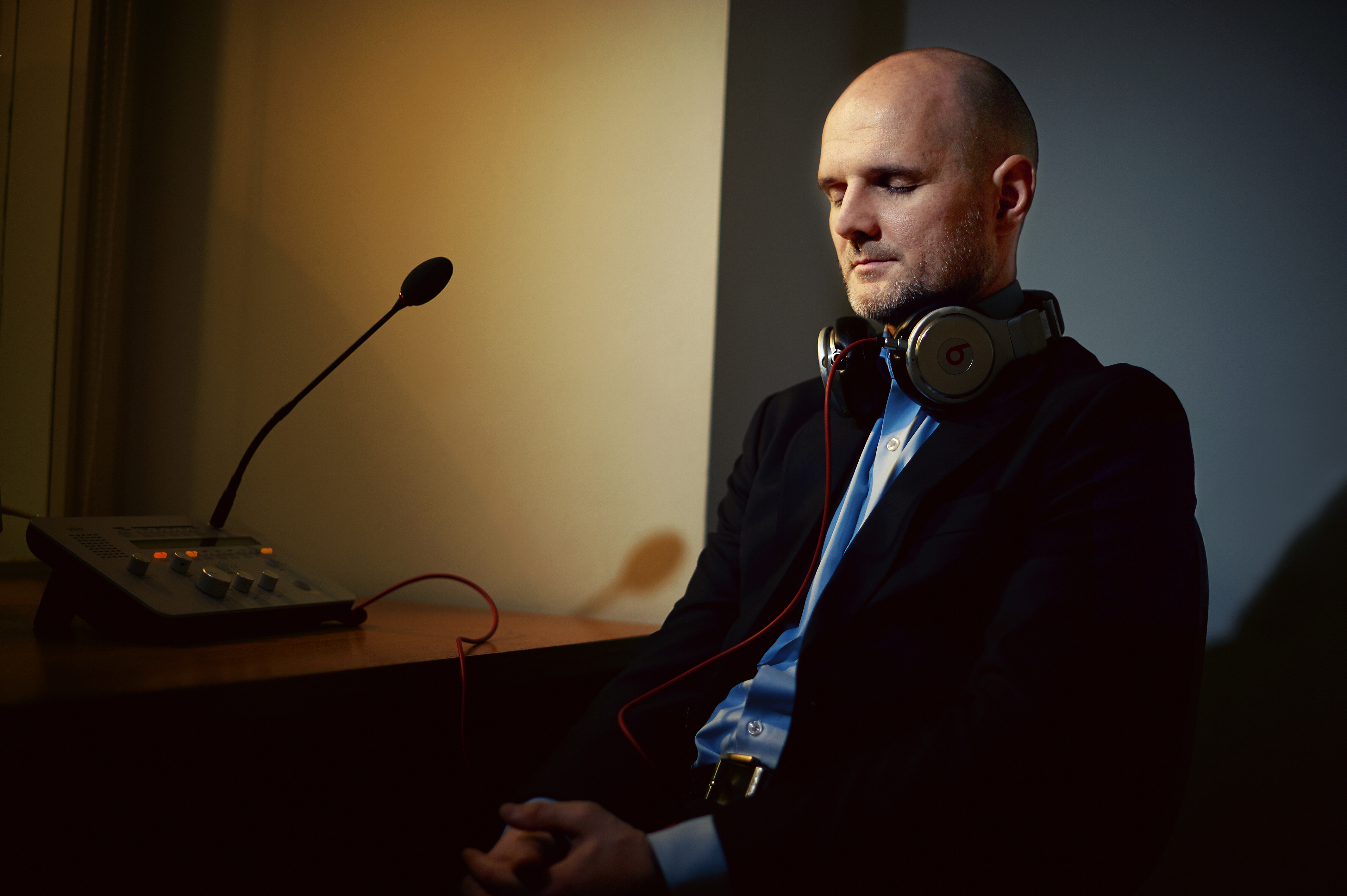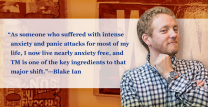Each workplace environment is unique, but in the era of 40-plus-hour work weeks, they have a common thread – they’re stressful. The article below was originally published in the Journal of the Institute of Translation and Interpreting. It’s an insightful look into how the Transcendental Meditation technique (TM) benefits interpreters. Written by Pavel Khokhlachev, a Russian-English conference interpreter based in London, it offers insight into how TM can positively impact professionals who travel for work, people who work in high-stakes scenarios, or professionals who regularly deal with a stressful environment.
Khokhlachev also breaks down different types of meditations, because that big umbrella term can refer to many different things, and not all of them will have an impact on your work-related stress. In today’s work environment, finding a way to balance stress and peak performance is critical for a thriving career and a balanced life. How would professionals in your sector benefit?
Mind over Matter
By Pavel Khokhlachev
Working with a major car manufacturer recently, I discovered something interesting. Automotive engineers are constantly dealing with seemingly opposing characteristics and trying to reconcile them: performance vs economy, stability vs comfort, functionality vs cost. As interpreters, we have to do the same thing, with at least one pair of contradictory needs – the need for peak performance and the need to manage stress. The question is, what can we do about it?
Stress is the biggest plague of the 21st century, and self-employed interpreters are perfectly positioned to bear the brunt of it. For us, there are no corporate-style healthcare programs, no wellness budgets, no company gyms – it’s DIY all the way. Remedies for stress, fatigue and psychological trauma range from counselling to yoga classes, from prescribed drugs to a glass of wine after work. Everyone has their own way of dealing with stress. Mine is meditation.
 Khokhlachev meditating
Khokhlachev meditating
Hidden Reserves
I learnt Transcendental Meditation 23 years ago and have been practicing it without fail twice a day ever since. From a very early age, I had a romantic idea that it was somehow possible to unlock hidden reserves of the brain, and my search ultimately led me to TM. Initially it piqued my interest because of its ability to improve my memory, learn new concepts, and increase my IQ. At 17, I did not know what work-related stress, fatigue and psychological trauma were. And I didn’t care. But years later, I discovered that TM was also a very effective stress reduction tool. It’s a great feeling to know that no matter how stressful and hectic my day is, I can always sit down, close my eyes and 20 minutes later feel rested, composed and alert. For me, the best thing about TM is that it is not a philosophical technique – it does not involve manipulation of the mind or any attempt to create a mood. Rather, it produces real psychological changes.
TM in Action
On a recent business trip, I travelled 6,000 miles to attend a conference, and the time difference was seven hours. On the first day of the event, I had hardly slept a wink. The main speaker, a celebrity author, was going to come on stage after the coffee break, but I was feeling exhausted – jet lag and sleep deprivation had suddenly caught up with me. There was a lot of pressure: a client had flown me to the conference specifically to work with this celebrity author. I looked for somewhere to sit and close my eyes, but the only place available was on the sofa right next to the networkers having their coffee break. I sat with my back to the crowd, closed my eyes and meditated. And just like that, 20 minutes later I was back. It felt as though I had just got up from a good night’s sleep – relaxed, feeling positive and in control of the situation. The ability to practice this technique just about anywhere is a huge plus.
The Science Behind the Practice
Scientific research on Transcendental Meditation comprises more than 600 studies conducted at over 250 independent universities and research institutions in 33 countries. These studies have demonstrated a wide range of benefits for the mind, body, behavior and society, and have appeared in many leading peer-reviewed journals.
With TM, within just 20 minutes, the body gains a type of rest that is, in certain respects, even deeper than the deepest parts of our sleep at night. And although it does not replace sleep, it certainly helps you to deal with tiredness, as I have discovered many times in my interpreting career. This deep rest and relaxation allows the body to activate self-healing mechanisms and helps re-establish your internal balance. It also effectively reduces the psychological correlates of stress – for example, in one study, levels of cortisol typically reduced by 40 per cent during TM, compared with about 5 per cent in a control group who were simply sitting with their eyes closed. Breathing and heart rate slow down, and there is increased blood flow towards the prefrontal cortex. Other benefits include lower blood pressure and reduced anxiety.
According to a 2013 report by the American Heart Association, the TM technique has been shown to significantly lower blood pressure. In the US, the David Lynch Foundation has been actively promoting TM for veterans to help them deal with psychological trauma and symptoms of post-traumatic stress disorder (PTSD), with striking results. TM has also demonstrated its effectiveness in helping victims of violence and other ‘at risk’ groups. Given the situations some interpreters face, PTSD is a real side effect of the job, and TM can help with that.
Dr. Norman Rosenthal, a clinical professor of psychiatry at Georgetown University Medical School, and author of Super Mind, says: ‘Anxiety in all its various forms will generally respond well to Transcendental Meditation. Even in those people already receiving treatment for anxiety, adding TM to the mix often means that their drug levels can be lowered as their response improves.’
Demanding Tasks
Consecutive and simultaneous interpreting are extremely demanding tasks, and the quality of our work is in direct proportion to our ability to focus, reformulate, react quickly and think creatively. Could TM help us to hone these skills?
In their book Excellence Through Mind-Brain Development: The secrets of World-Class Performers, Harung and Travis demonstrate the findings of a study of top-level managers, world-class athletes, professional classical musicians and other world-class professionals. They come to two conclusions. First, higher performance in any profession is based on higher ‘mind-brain development’. And second, this mind-brain development is easy to achieve in practice.
According to their research, peak performance is associated with higher brain coherence or connectivity. EEG studies on TM show that regular practice creates exactly this style of coherent brain functioning. Higher EEG coherence is correlated with higher creativity, greater efficiency in learning new concepts, higher verbal intelligence and greater neurological efficiency. Another study has shown a significant improvement in field independence which means greater ability to focus on details while maintaining broader comprehension – an essential ability for both simultaneous and consecutive interpreters.
Types of Meditation
When I mention the word ‘meditation’, people often tell me they think it’s hard. ‘I can never quite clear my mind of thoughts’ is a common response. When I say that this particular type of meditation does not involve concentration or clearing your mind of thoughts, they look confused. The problem is that the word ‘meditation’ is too generic. Saying that you meditate without specifying what you do is a bit like saying you eat food without saying what kind of food.
In actual fact, meditation can be broadly divided into three categories: focused attention, open monitoring, and automatic self-transcendence. These types of meditation are distinctly different not only in the way they are practiced but also, very importantly, in the effects they produce in the brain and body. The human mind can be compared to an ocean, with lots of activity and waves on the surface, and quieter, more restful levels deeper within. In daily life, our minds are stuck on the surface and are always active. Yet, just like the ocean, they have quieter, more settled levels within. The question is how to get access to those quiet depths.
Automatic Self-Transcendence
Focused attention techniques, like traditional Zen meditations, qigong and vipassana, increase beta and gamma EEG activity. They train the mind to stay focused on one object (candle light, breathing, etc) and keep forcing it to return to this if it tries to move away. Open monitoring techniques (theta EEG activity) involve allowing your mind to move in a certain direction or to observe your thinking process without getting emotionally involved. TM is in the third category of automatic self-transcendence (alpha wave EEG). Different from the first two types, which hold your mind at a surface level, TM directs your mind inward towards more settled levels of thinking until it goes beyond or transcends the finest level of thought and reaches the simplest level of awareness. This is the experience of transcendence – a state which scientists claim is associated with the highest brain coherence and connectivity.
Scientific evidence on TM and my unscientific subjective experience of it do make me rather optimistic that it might be the ideal solution to help interpreters finally reconcile peak performance and stress reduction.
How do you deal with stress in your industry?




